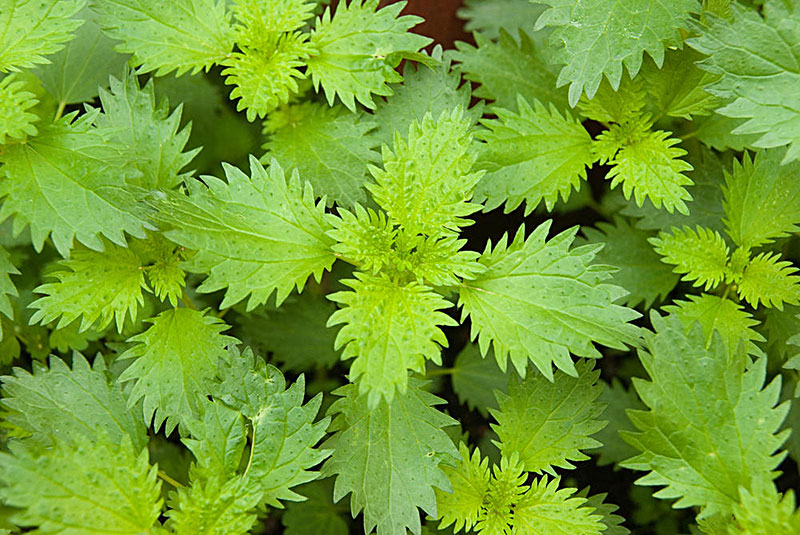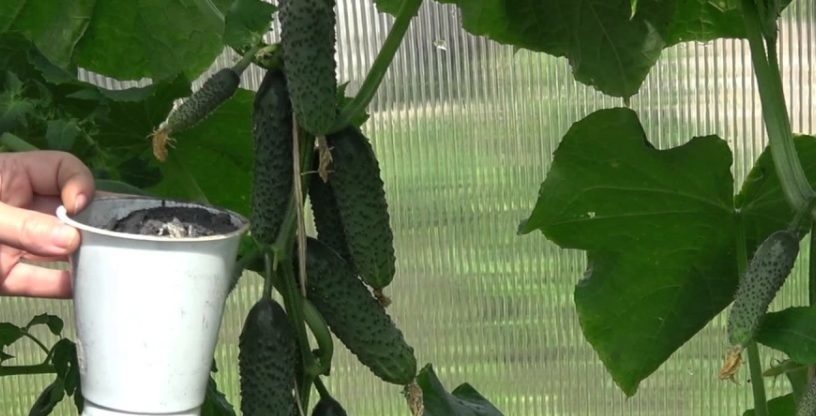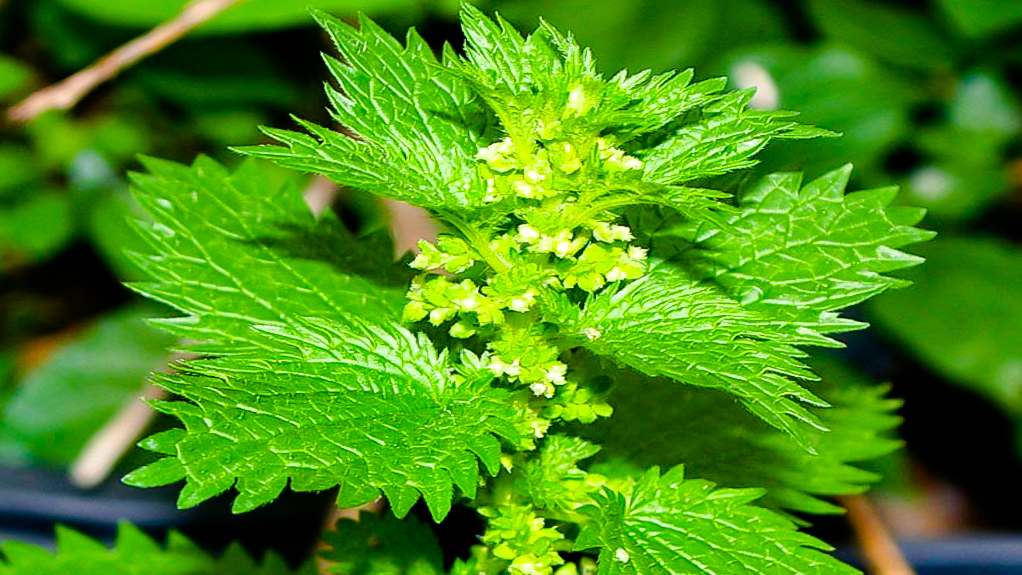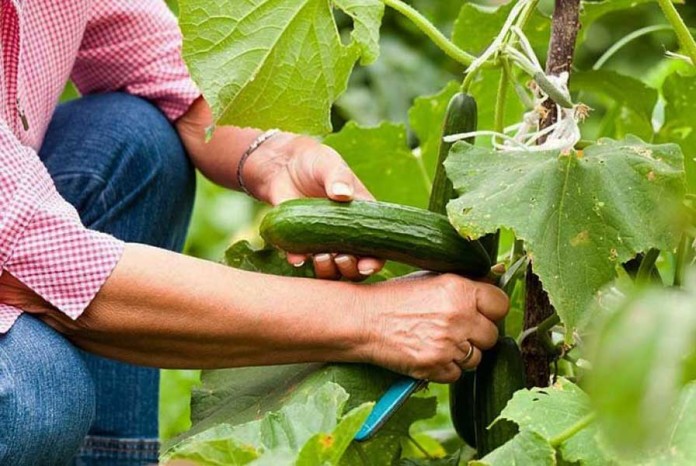Feeding nettle cucumbers is not the know-how of modern gardeners; the effectiveness of using homemade organic fertilizers has been proven by time. From the plant infusions are made for watering the tops and top dressing the soil, they are used in fresh or slightly “basement” (dried) form as mulch. Thanks to this treatment, you can get a rich harvest, prevent the invasion of pests and increase resistance to pathogens and adverse climatic effects.
Content
Nettle in the garden
Natural organic matter increases the nitrogen content in the soil and inhibits the activity of pathogenic microorganisms that cause white and gray rot. Nettle infusion is cheap, it is easy to manufacture and use, there is no negative effect on human health - if there is no allergy to the plant.
Fertilizing soil and watering cucumbers:
- increase the survival rate of seedlings and facilitate rooting;
- protect the root system from spoilage, and whips - from fungal diseases and pests;
- accelerate growth;
- improve the taste of cucumbers.
As part of the plant:
- B vitamins, ascorbic acid, biotin, retinol, tocopherol - improving metabolic processes;
- nitrogen, potassium, magnesium, phosphorus - stimulating metabolism at the cellular level;
- volatile - substances of antibacterial action;
- organic acids - increasing the plant's own defenses.
Broths and infusions, which fertilize and feed cucumbers, contain useful substances in the most accessible form.
The most useful types of "weed"

Biologists have described 54 species of plants, but most often they have to meet stinging nettle, dioecious or hemp. The latter has lobed leaves, contact with it does not cause pain, the content of vitamins and minerals is inferior to herbaceous bushes with increased stinginess.
 You may be interested in:
You may be interested in:Dioecious - a succulent plant, moderately burning, with large leaves with patterned edges, contains a high amount of essential oils and vitamin K. Stinging nettle has smaller leaves, not inferior to the dioecious in useful properties. It is these species that gardeners use to prepare organic fertilizers for plant nutrition.
Nettle harvesting and infusion recipes

Prior to flowering, whole stems are cut under the root without mechanical damage and signs of disease. It is advisable to choose specimens with saturated green leaves. Harvesting is carried out in cloudy, dry weather or when the sun begins to set. They are dried, or rather “dried up”, in the sun, spread out in one layer, or suspended in bunches.
A container with standing slightly warmed up water should be prepared in advance. The ideal option is an oak barrel, but you can use enameled metal or food-grade plastic. It is advisable to strengthen the drain cock in advance - then you do not have to deal with filtering. Occupation is unpleasant - nettle fertilizer has an unpleasant odor.If there is no tap, then before immersing bio-raw materials in a liquid it is folded into a plastic net so that it can be easily removed.
To accelerate the fermentation, the container is placed in the sun or food yeast or yeast is added to it. These components not only speed up cooking, but they themselves have useful properties for planted cucumbers. Yeast contains high amounts of vitamin B.
Nettle infusion recipes:
- Universal composition. Suitable not only for spraying and top dressing cucumbers infusion of nettles, but also tomatoes, wild strawberries, Victoria and fruit trees. It is not used only for onions and legumes. Prepared bio-raw materials are placed in a container with water, crushing with a crush so as to tightly fill in 4/5. To speed up the cooking process, add granulated sugar or molasses - proportions of 100 g / 10 l. Leave for 5-7 days. Nettle infusion for dressing is ready, when the fermentation is over, the contents in the container acquired a saturated brown color and a silage smell.
- Multicomponent composition. Made from a mixture of herbs. To the nettle are added dried leaves and stalks of dandelion, alfalfa, cornflower, comfrey, plantain, coltsfoot. The main ingredient takes 2/3 of the total. Insist as a multicomponent composition.
- With bread or kvass. Preparation as a universal fertilizer from nettles for cucumbers, but 1/4 of the entire volume of the barrel is filled with breadcrumbs, preferably brown bread, fresh or drunk leaven for kvass. You can use it after 3-5 days - due to yeast fungi, fermentation is accelerated.
Ready-made organic fertilizer can be stored for 1.5 years. In winter, the container is transferred to the house or to the cellar and insulated so that the contents do not freeze.
Ways to use nettles in the garden
In cold regions, the plant is used not only as a fertilizer or spray solution, but also for the preparation of beds. In areas where there is a short cold summer, it is customary to grow cucumbers on nettles.
The plant is harvested in the first months of summer, dried in a ventilated room. After the end of the summer season, old lashes are removed, the soil is dug up, and in the area where usually sacucumbers harvest, dig grooves deep on the bayonet of a shovel at a distance of row spacing. The prepared bio-raw material is ground with a chopper, poured to the bottom, filling approximately half. Mix the turf with rotted manure or ready-made compost, close the ditches. Sprinkle with mulch - straw, spruce branches, agrofibre. In such warm beds you can plant cucumbers, tomatoes or cabbage. "Nettles" often planted early varieties of strawberries.
Mulching
Springs and beds are sprinkled with fresh or dried shoots in early spring to protect the roots of plants that have just been planted from frost, or in the summer to preserve precious moisture and protect from the hot sun. In preparation for winter, mulch cover “warm” beds, perennial plants, roots of fruit trees.
 You may be interested in:
You may be interested in:Compost
Dried, burning weed is used to make compost.The application of such fertilizer to the soil increases the nitrogen content necessary for photosynthesis. A layer of chopped nettle, young or dried, no matter (preferably collected before seed formation) is poured into a compost box or pit, on top of the turf, paper (not waxed), straw, food leftovers (not meat), again soil and nettle, periodically mixed. The rotted mass does not smell as unpleasant as a saturated infusion, but still it is worth putting 3-4 sprigs of valerian into it. In the green mass, you can add snapdragon, tansy, horsetail, clover.
Use of nettle tincture
Regardless of the processing method - cucumbers are poured under the root or sprayed, cloudy weather or time before sunrise or after sunset is chosen for work. Bred infusion in a ratio of 1: 10-1: 15 for spraying and 1: 2-1: 5 for feeding the soil. The proportions of the working solution largely depend on the concentration of the infusion. In order not to harm the plant, you can try what effect it has on the bush. To do this, 2-3 lashes are sprayed with a composition of various concentrations and after a day they look for points on the leaves that resemble burns. If everything is normal, bred in the selected concentration.
Spraying is carried out 2 times a month for weak plants and 1 - for prevention, to prevent the development of diseases, late blight, gray and white rot. But if symptoms have already appeared on the leaves or shoots that indicate infection, nettle will not help. We need chemicals.
Multiplicity of root top dressing - 1 time in 10-14 days. Most often it’s not worth watering - the green mass is actively growing, but the formation of fruits is slowing down.
To stop the invasion of pests (aphids or spider mites), laundry soap is added to the working solution for spraying - 20 g per bucket. This increases the resistance of the film formed on the leaves and interferes with the reproduction of insects.
To protect against slugs, freshly mowed nettles are placed in the aisle. Pests will not crawl onto protected beds - when they come in contact with nettle venom, the mollusks die.
After the plants have dried, they can be used to make compost or liquid organic fertilizer.
Reviews

Ivan, 25 years old, Berezniki:
“My parents went to rest and left cucumber beds on me. Forgot water on timeleaves have lost turgor. A neighbor helped solve the problem, shared nettle infusion. On his advice, I diluted 1:20 with water and sprayed the beds 3 times a week. The nourished lashes are green again. ”
Natalia Vitalievna, 70 years old, Volzhsk:
“My cucumbers were planted on a plot in which a mixture of nettles and humus was planted in the fall. Almost all seedlings take root, we have to thin out. And I use nettle infusion not only in the garden, but also at home, for flowers. ”
Mikhail Arkadevich, 64 years old, Dmitrov:
“Always in the cellar costs 20-30 liters of nettle infusion. I strain as much as necessary and water the garden. Cucumbers are delicious, crispy, juicy. 2 years no problems with late blight and aphids. Here are just slugs still bother, I collect with my hands. I don’t want to use chemistry. ”
It is possible to use for feeding plants not only an infusion of burning weed, but also ash. Dried stems are burned on a metal sheet, and ash is collected and used to feed cucumbers as well as a wood counterpart. By the way, such a product is 40% pure potassium. This macrocell accelerates flowering and stimulates the formation of fruits, increases the shelf life of the crop.




 Armenian cucumber with melon flavor: description and characteristics, reviews
Armenian cucumber with melon flavor: description and characteristics, reviews Do-it-yourself vertical beds for cucumbers: schemes, photos
Do-it-yourself vertical beds for cucumbers: schemes, photos Hollow cucumbers: reasons for the appearance of hollow, what to do
Hollow cucumbers: reasons for the appearance of hollow, what to do Which manure is best for cucumbers: application, how to breed
Which manure is best for cucumbers: application, how to breed